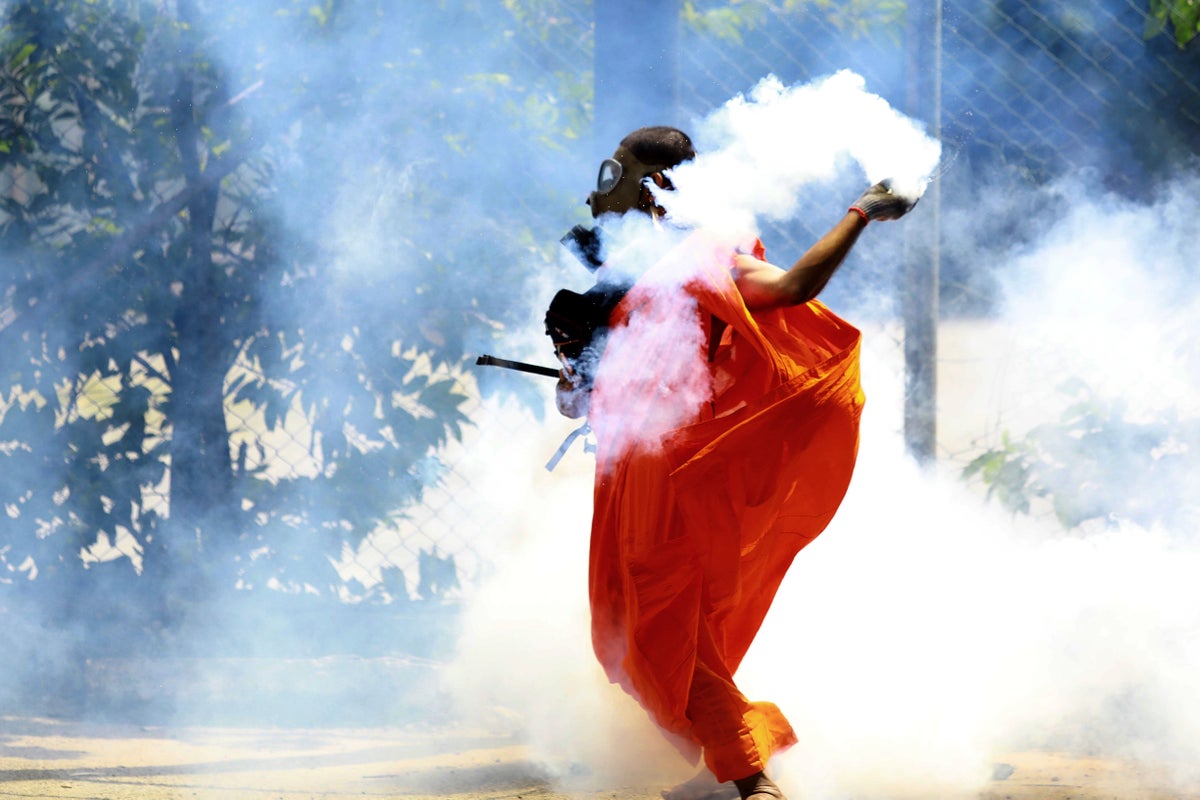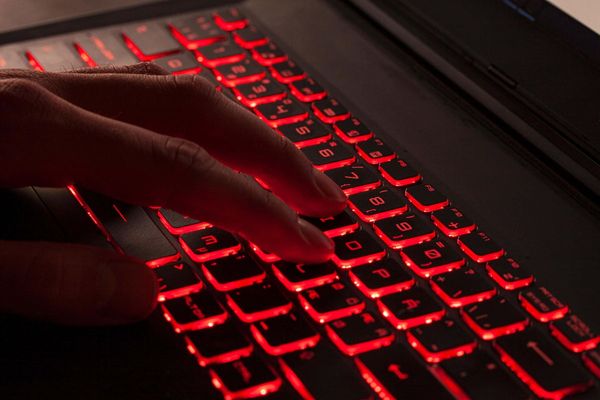
The street protests that drove Sri Lanka’s President Gotabaya Rajapaksa from office last month brought together people from across the country’s diverse and sometimes warring ethno-religious groups: Tamils, Muslims, Christians and Sinhala Buddhists — including, unmistakably, the saffron-robed Buddhist monks who are fixtures of Sri Lanka’s political scene.
But with Rajapaksa in exile in Singapore and life returning closer to normal, decades-old questions are being raised about Buddhism’s role in Sri Lanka’s government.
___
This content is written and produced by Religion News Service and distributed by The Associated Press. RNS and AP partner on some religion news content. RNS is solely responsible for this story.
___
Political involvement by the monks — easy to spot in the protests against Rajapaksa’s inaction on Sri Lanka’s economic woes — also includes taking seats in Parliament and joining political parties. Last year, a controversial monk named Galagoda Atte Gnanasara was appointed to a presidential task force for legal reforms despite his vociferous anti-Muslim views.
“The role of monks is to help people improve their spirituality. During the last 10 years, their political involvement has become too much, I think. People don’t view them as religious leaders anymore,” said Venerable Mahayaye Vineetha, a Sri Lankan monk living in Kandy, a city in Sri Lanka’s central highlands.
The connection between monks and political figures has reportedly diminished some monks’ respectability. Moreover, hard-line political monks with ties to the Rajapaksas have turned out to join protests against their former allies alongside younger, more progressive monks.
One video taken from Batarramulla in April shows a monk, a former ally of Rajapaksa’s and leader of the nationalist Janasetha Peramuna party, being scolded and pushed out of the protests. A man in the video can be heard saying “It is because of the people like you, we suffer today like this.”
“This is one of several instances where people called out monks as being tools of the state and said they have contributed to the current situation, the maintaining of the political elite, and the supporting and abetting of violence and ethnic strife,” said Nalika Gajaweera, a research anthropologist at the Center for Religion and Civic Culture at the University of Southern California.
Theravada Buddhist monks have been both spiritual and practical advisers to Sri Lankan political leaders for centuries, starting with the country’s kings. In the seven decades since Sri Lanka’s independence from Britain, the relationship has become more entangled as Sinhala Buddhism, marked by its nationalistic values, has proliferated in the nation’s monasteries.
Sinhala Buddhist nationalism can be traced back to Anagarika Dharampala, an influential anti-imperialist and nationalist monk from the early 19th century. His speeches, filled with anti-Muslim and anti-Tamil rhetoric and aimed at creating a Buddhist dominated nation, are infamous in Sri Lanka.
Dharampala’s goals were realized with the 1956 Sinhala Only Act and further enshrined in Sri Lanka’s 1972 constitution, which privileged Buddhism over other religions, essentially cementing an ethno-religious majoritarian state.
In recent years, the blatant racism and violent language of the first wave of Sri Lankan independence have reappeared. Hard-line monks with ties to politicians like the Rajapaksas have led to racist rowdyism among their followers; some monks have even committed violence themselves.
“People should be able to see that there is a weaponization of religion for political purposes, to promote a certain political agenda,” said Gajaweera.
In 2015, Venerable Akmeemana Dayarathana Thero, a close ally of the Rajapaksas, was arrested for threatening Rohingya refugees in Sri Lanka and encouraging people to throw rocks at them.
As the economic situation has devolved in Sri Lanka, monks have come to play an increasingly important role in day-to-day life. In rural areas, temples can be the sole resource for villagers who otherwise lack access to news on political developments. In urban areas, where the education system has largely collapsed, some temples run dharma schools for children.
Chamila Somirathna, a professor at the Colombo Institute of Research and Psychology and the mother of two young children, said her 5-year-old son has only been able to attend kindergarten in person for 30 days in the last two years after the government forcibly closed schools.
“It’s really important for temples to mediate in these kinds of cases. Kids should get the chance to associate with other kids their age, get education and get that school experience.”
As Sri Lanka’s economy has suffered, too, the monks provide much-needed aid through their redistribution of dana, or almsgiving. Despite a stark lack of resources and an increasing hunger crisis as the year goes on, dedicated lay Buddhists still show up to provide monks with food each morning.
“People do not have enough food for themselves, but bring the best thing for monks. I have so much lovingkindness for these people. They have a lot of faith, and they might have some problems with monks, but they’ve never stopped with alms,” said Vineetha.
Typically, food given to monks is either consumed or thrown away, but in the current hard times, many temples are reallocating extra food to families in need. Addressing this suffering “always comes first. Then we (monks) can think about other things,” according to Vineetha.
Despite the scenes of monks being booed at the protests, many of the young, predominantly Buddhist protesters welcome monks’ involvement in the popular uprising and politics at large, as long as it is done in limited measure.
“Some senior monks have merely spoken in support of the protest movement. They weren’t on the streets joining in, but just said, ‘Yes, we support this.’ For some protesters, that statement likely gives public legitimacy to the struggle, particularly among the wider Sinhala Buddhist public,” said Gajaweera.
But their presence at the protests has made even some other monks wary. Some activists who forced the former president out have accused these monks of being “opportunistic” — trying to save face by protesting despite previously supporting the Rajapaksa regime.
Many Sri Lankans are less than pleased that their new president, Ranil Wickremesinghe, is a close ally of the former president. They expect the hard-line nationalist monks formerly aligned with Rajapaksa will back Wickremesinghe and the status quo.
“The constitution is still structured as the Sinhalese and the ‘other,‘” said Gajaweera. “Although everyone is ‘equal,’ there’s a special case for the Buddhists. These contradictions of the nation-state will continue to shape the future.”
The best route for monks, said Vineetha, is to use their position not to gain power for themselves, but to “help laypeople understand the political system. When there is an election and leaders come to villages promising this and that to the people, we can help them grasp the corrupt system.”







